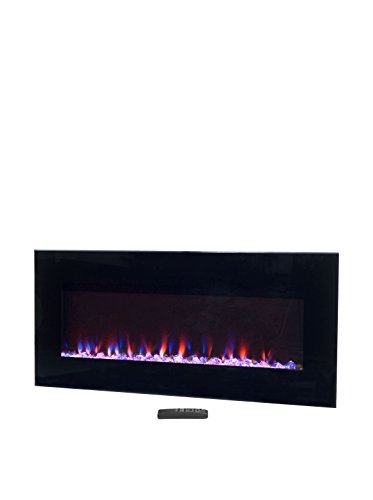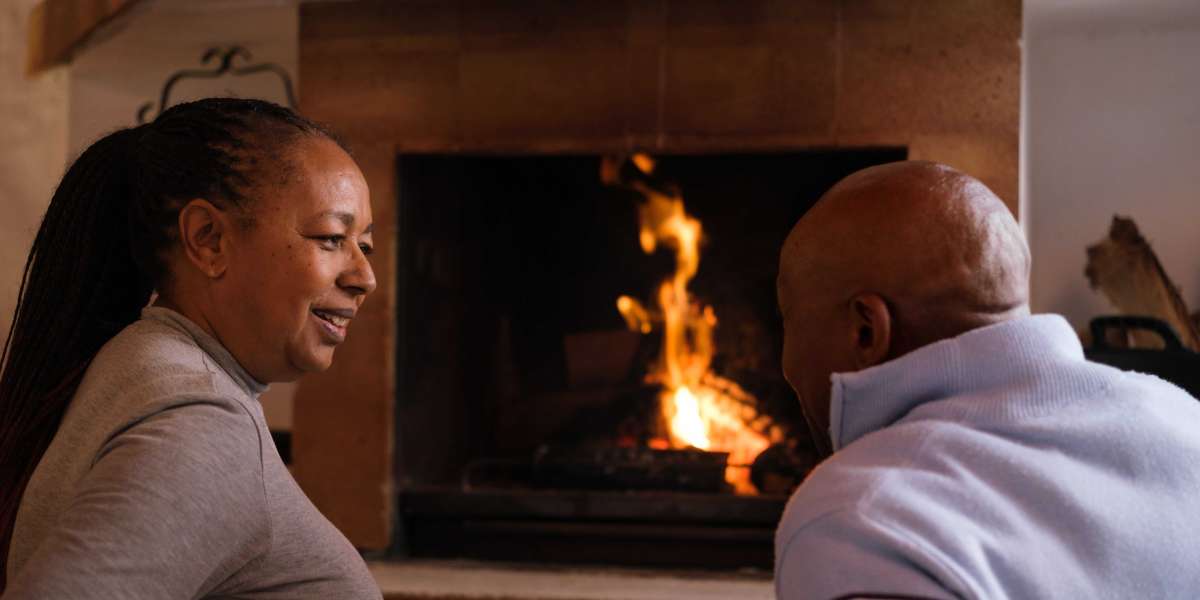Unlike traditional open fireplaces wood stoves are specifically designed and optimized to burn firewood. This allows them to meet the stricter emission requirements.
Wood burning stoves provide glowing yellow flames, cozy crackling sounds, and that primordial sense of warmth. The smoke that is produced is contaminated by air pollutants such as benzene, formaldehyde, and polycyclic aromatic hydrocarbons.
Efficient
Fireplaces and stoves that burn wood offer a stunning and natural heat source to the home, they are also extremely efficient. A high-quality wood burner can attain an Ecodesign rating as high as 77%. With rising energy costs it is important to ensure that you get the most value from your log stove - the good news is that this is more simple than ever before!
One of the most important factors in the effectiveness of a wood burning stove is in the water content of the wood. This is why we recommend only using wood that is seasoned, that has been dried for at least one year, and often two years. The drier the wood, the more efficiently it burns which results in less smoke and harmful emissions.
A wood burning stove has the benefit of being an environmentally friendly fuel source, which is great for the environment. By purchasing locally sourced wood, you are also helping to contribute to the active management and conservation of woodlands. This is beneficial for wildlife.
The only thing a wood-burning stove needs in terms of maintenance is to regularly remove and dispose of ash. It's a bit of a hassle, but it is worth it to get the best heat out of every log. Additionally, if you wait 2-3 days for the ashes to fully cool and then reuse them as a non-toxic and eco-friendly ice melt. They can also be used to polish jewellery and absorb smells.
A wood-burning fireplace is an old-fashioned classic. Although they're not as popular than gas Fireplaces And Stove however, there's no denying the beauty and enthralling sound of a roaring fire. These fires are great for snuggling to on cold winter nights, and they create a warm and welcoming area in your home. Make sure you invest in a high-quality wood burner and you'll be benefiting for many years to be! Contact us today to find out more about how our expert chimney sweeps can assist you in getting the most out of your stove.
Low Carbon
Wood burners that burn cleanly and efficiently are the best way to save money while keeping your house warm. As an added benefit they also help to support local woodland management, a fantastic way to support the wildlife in your local environment.
Wood-burning fireplaces and stoves create very little pollution if they are properly maintained and used with dry, seasoned and dry firewood. However, when they are not maintained properly or are used with poor quality wood the smoke generated by them is contaminated with fine particles (known as particulate pollution) that can irritate the lung and other organs. Carbon monoxide, air pollutants that are toxic such as benzene and formaldehyde and polycyclic aromatic hydrocarbons are also present. Inhaling this type of air pollution may cause lung irritation as well as wheezing, coughing, and asthma attacks. It could even lead to serious health issues such as cancer, heart disease, or premature death.
Some people fear that using a wood-burning stove will contribute to climate change however this isn't necessarily the case. The combustion of wood produces energy that is carbon-neutral. The wood absorbs carbon dioxide throughout its life. When it is burned, the carbon is released into the atmosphere.
 The wood is sourced locally, which reduces the amount of pollution produced during the transport process. It is also important to select high-quality woods that are seasoned and seasoned as they will have an extended and even burn than softwoods.
The wood is sourced locally, which reduces the amount of pollution produced during the transport process. It is also important to select high-quality woods that are seasoned and seasoned as they will have an extended and even burn than softwoods.Modern wood stoves, like the ones made by Charlton Jenrick, emit significantly less pollutant than older stoves. They have been tested and certified to meet 2020 EPA standards which are much more stringent than the previous emission limits.
To avoid a build up of exhaust within your home, all wood burning stoves should be vented fully to the outside. All of our DEFRA-exempt and clean-burn stoves produce clear exhaust when keeping the flames at a distance from the wood logs and by using dry, seasoned firewood.
A wood-burning stove with a hybrid unit or catalytic converter could be the most efficient low carbon heating solution. These units re-ignite gases and particles that were ignited during the initial burning in a second phase by mixing them superheated air. The remaining gases and particulates are transported through a catalytic combustion unit for a final third combustion. This further reduces emissions to levels far below government standards.
Clean Burn
Cleanburn wood stoves burn fuel at the highest efficiency. This results in a minimum amount of particles emitted into the atmosphere when burning wood. The stove's air management system regulates the intake and venting of gases, ensuring that the combustion process is conducted in a controlled, sealed atmosphere. It also regulates flame height to maximise heat output and minimise emissions.
This means your chimney and its surroundings will be cleaner than older stoves. Particulate matter (also called particle pollution) caused by incomplete combustion of wood can cause respiratory problems like wheezing and coughing and contributes to the development of heart diseases as well as stroke, diabetes, and other serious health issues. Wood burning also contributes to poor air quality in cities.
The smoke from poorly combusted wood contains fine particulate matter and dangerous air pollutants such as carbon monoxide, volatile organic compounds, nitrogen oxides, benzene, formaldehyde and polycyclic aromatic hydrocarbons. These particles can get into the organs of the lungs which can cause discomfort, damage and even death. Airborne dust can also damage surfaces in your home, giving them a gritty feel.
When you are using a fireplace that is wood-burning, it's important to only use firewood of the highest quality that has been dried and seasoned. dried. The most effective woods for heating are hardwoods like oak, ash and beech. Hardwoods have a high density and BTU content, and they provide more heat than softwoods.
You should also check whether your local authority has any regulations regarding wood burning. These may include rules regarding odors and nuisances, as well as visible emissions or smoke opacity limitations.
It is essential to keep the glass of a wood stove that has an open front that is free of dirt and deposits. This can be done with a dry cloth or oven cleaner spray. You can also add bicarbonate soda mixed with water to the glass.
Regular maintenance is essential for your chimney and stove. Regular chimney cleanings are necessary to eliminate creosote, and to ensure that the flue is working correctly. Be sure to note dates for regular inspections in your calendar, since this will allow you to avoid costly repairs and extend the lifespan of your wood stove.
Low Maintenance
Many people choose to install wood burning fireplaces due to the natural warmth they generate. However, this kind of fire requires a bit of upkeep and maintenance. If it is not maintained and cleaned regularly, the chimney, flue, and stove could have the potential to cause fires within your home. Fireplaces can also provide heat in the event of an electrical outage, particularly during winter storms where tree branches can fall and power lines could be damaged.
 Using a wood stove for heating will reduce your carbon footprint considerably when compared to other fossil fuel sources such as gas. Modern wood stoves and inserts are designed to meet EPA (Environmental Protection Agency) standards which mean they emit very little carbon dioxide. The more well-seasoned wood that you use the more efficient the stove will be. You'll need less wood to generate the same heat.
Using a wood stove for heating will reduce your carbon footprint considerably when compared to other fossil fuel sources such as gas. Modern wood stoves and inserts are designed to meet EPA (Environmental Protection Agency) standards which mean they emit very little carbon dioxide. The more well-seasoned wood that you use the more efficient the stove will be. You'll need less wood to generate the same heat.These fireplaces require some upkeep and care, including ensuring they are positioned away from combustible materials and a screen is in place. The air flow can be improved by keeping the grate free of ash and debris. This will ensure that the fire is burning longer and your home clean. It is important to have your chimney and stove cleaned at least twice per year to prevent the accumulation of creosote that could create a fire hazard or clog and hinder the airflow.
It could take a while for a new homeowner to learn to ignite, light and maintain a continuous fire in the fireplace. But, once you've achieved the art of creating and maintaining an open flame in your wood burner, it will be a source of constant pleasure that can provide heat and warmth for your home year after year.
Wood burning fireplaces have been around in a variety of forms or styles for over 500 years. They've gained popularity due to their effectiveness, sustainability, and the natural warmth that comes from wood. If you're thinking of buying a new heater, talk with your local certified Regency dealer to find out more about the advantages of a wood stove or an insert for your home.



